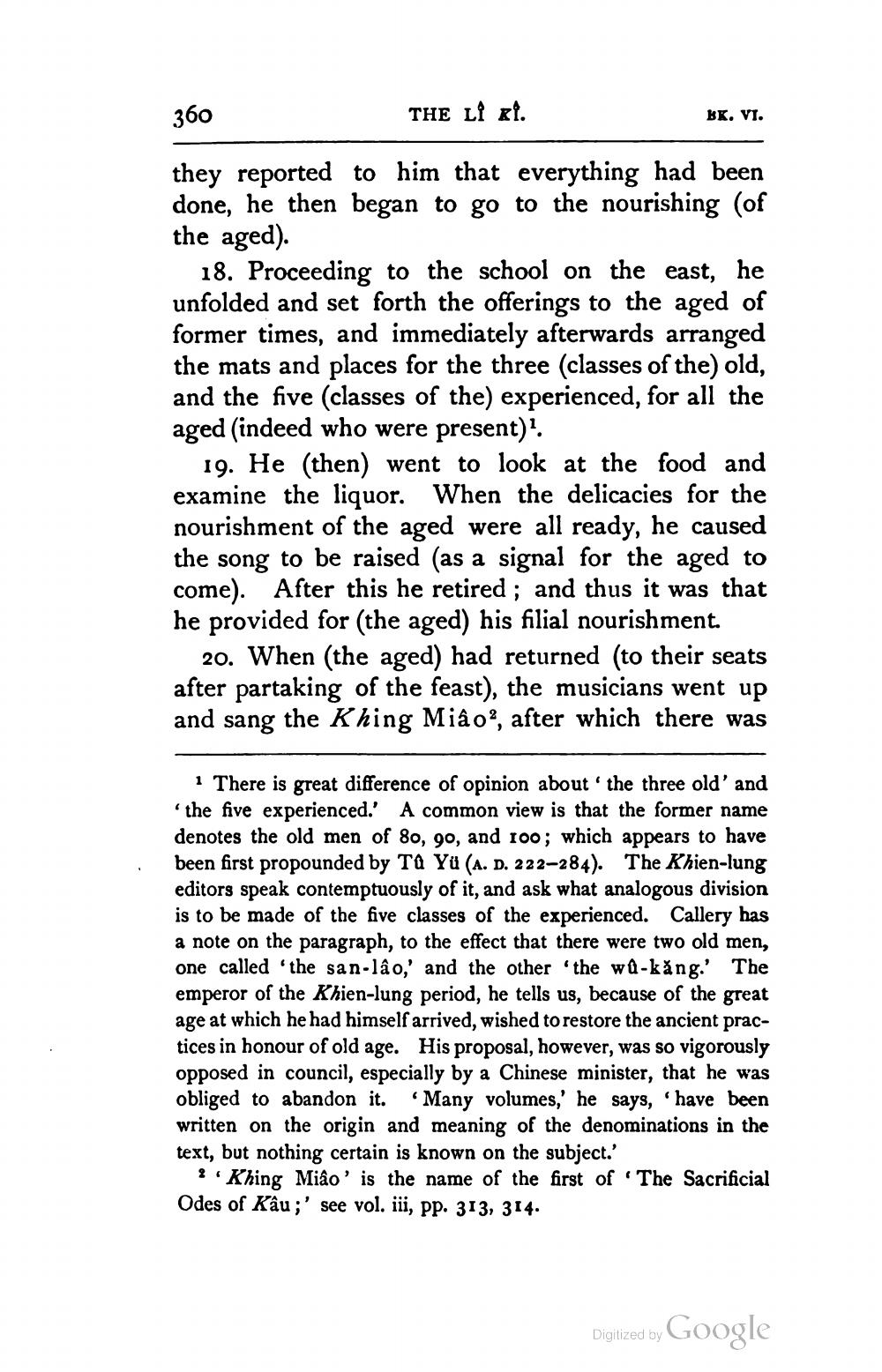________________
360
THE li xt.
BK. VI.
they reported to him that everything had been done, he then began to go to the nourishing (of the aged).
18. Proceeding to the school on the east, he unfolded and set forth the offerings to the aged of former times, and immediately afterwards arranged the mats and places for the three (classes of the) old, and the five (classes of the) experienced, for all the aged (indeed who were present)?.
19. He (then) went to look at the food and examine the liquor. When the delicacies for the nourishment of the aged were all ready, he caused the song to be raised (as a signal for the aged to come). After this he retired ; and thus it was that he provided for (the aged) his filial nourishment.
20. When (the aged) had returned (to their seats after partaking of the feast), the musicians went up and sang the Khing Miâo?, after which there was
1 There is great difference of opinion about the three old' and the five experienced.' A common view is that the former name denotes the old men of 80, 90, and 100; which appears to have been first propounded by Ta Yü (A. D. 222-284). The Khien-lung editors speak contemptuously of it, and ask what analogous division is to be made of the five classes of the experienced. Callery has a note on the paragraph, to the effect that there were two old men, one called 'the san-lâo,' and the other the wa-kång.' The emperor of the Khien-lung period, he tells us, because of the great age at which he had himself arrived, wished to restore the ancient practices in honour of old age. His proposal, however, was so vigorously opposed in council, especially by a Chinese minister, that he was obliged to abandon it. Many volumes,' he says, 'have been written on the origin and meaning of the denominations in the text, but nothing certain is known on the subject.'
? Khing Miâo' is the name of the first of The Sacrificial Odes of Kâu;' see vol. iii, pp. 313, 314.
Digitized by Google




